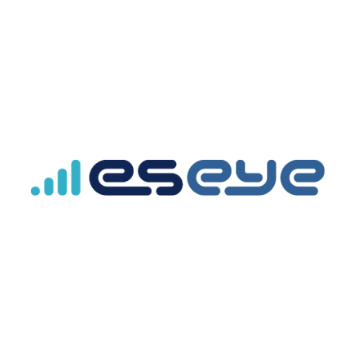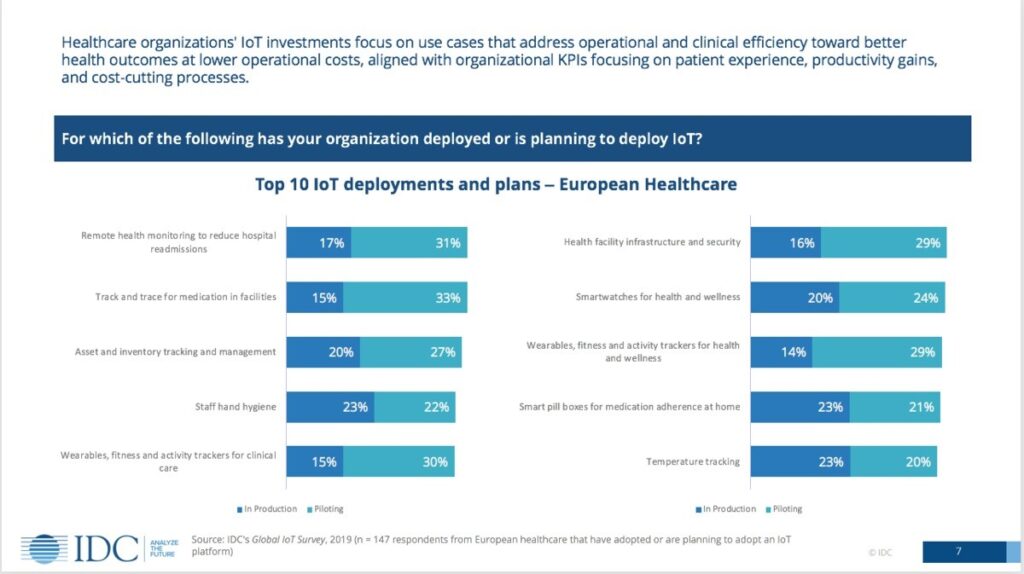Blogs
29 June 2020
Reading Time: 4 mins
Blogs
29 June 2020
Reading Time: 4 mins

Eseye
IoT Hardware and Connectivity Specialists
LinkedInThe turn of the decade marks IoT’s 21st birthday but will be remembered as the year that COVID-19 swept the globe. In this blog, we examine the Internet of Healthcare Things (IoHT) trends of the moment – a turn of phrase coined by Gartner – and share our thoughts on how IoT can protect the way we live, work and play.
The healthcare industry is notoriously slow at adopting new technologies but research from Forrester Research indicates we may see a shift in priorities soon as healthcare technologies begin to take more precedence. According to their latest figures, there is huge potential for smart healthcare to grow as currently only 7% of the work is delivered by IoT service providers in the APAC region.
At the start of the year, Gartner surveyed US-based enterprise IT managers which revealed that IoT adoption is growing more mainstream with 86% of respondents reporting that they had IoT architecture in place for many business lines.
Already we are tracking major health deals and investments that have taken place during this period of uncertainty – a positive sign that healthcare and medical organisations are adapting and pivoting in response to COVID-19. Research from CB Insights shows that infectious disease and life-support devices dominated the medical devices space in Q1’20.
While telehealth deals reached record highs in Q1 too with double the number of deals to Q4’19 say CB insights. Telehealth technologies are and will be used increasingly more for both prevention and protection. Personal consumer wearables can be used to track vital health signs, while telehealth visits will help to reduce the transmission of in-person appointments.
“We had previously projected 36 million telehealth visits for 2020, but we now think there will be a demand for as many as 1 billion telehealth visits this year”
Arielle Trzcinski, an analyst from Forrester Research
Smart IoT monitoring devices like Memo Hub are rising in demand as they support millions of vulnerable and elderly people to live more independent lives. Designed by next-generation telecare expert Alcuris, Memo Hub connects smart devices around a person’s home through Bluetooth and Zigbee which allow for daily activity to be remotely monitored. Eseye’s unique multi-network AnyNet 4G cellular IoT and Voice over LTE (VoLTE) connectivity expertise provides the highly reliable, resilient and critical connection between the Memo Hub and a 24/7 alarm monitoring centre and allows for multi-network switching instantly.
The information and insight are then delivered to caregivers, via the Memo App or the Dashboard, triggering an alert if behaviour patterns change and if there is cause for concern over their wellbeing. Any potential issues are flagged to caregivers quickly and preventative actions can be put in place – a reassuring safeguard especially amid the current pandemic.
Healthcare facility infrastructure monitoring is another area that’s seeing huge growth according to IDC.

Here we can observe that 29 percent of European healthcare facilities were piloting IoT devices for building monitoring and management in 2019. A number which is set to rise according to Gartner predictions that IoT devices used by hospitals and patients will grow exponentially over the next eight to 10 years. A range of IoT connected devices are collectively being utilised to help curb infections and ease healthcare pressures including real-time location systems (RTLS), remote temperature monitors, assisted living devices and smart cleaning.
In the case of RTLS, healthcare providers can locate devices like ventilators and track doctors, nurses, patients and visitors through RFID bracelets. RTLS beacons are placed into rooms to sense and identify movement, making it easy to track and keep records of activity; a vital tool especially when quarantine measures are in place.
Smart temperature monitors are also on the rise, enabling healthcare workers to quickly detect any temperature change in real-time and expedite caregiving.
The Oura smart ring is currently being used in a study on over 2,000 emergency medical workers at the University of California, San Francisco Medical Center and the Zuckerberg San Francisco General Hospital. Health data from the smart ring is helping to identify coronavirus symptoms through body temperature, heart rate and respiratory rate and pick up on any outbreaks early.
Thermal sensing technologies will also begin to trend outside of the healthcare setting when businesses begin to reopen as temperature monitors screen people as they enter the building accurately identifying body temperatures 37.8C or greater – one of the main symptoms of coronavirus infection.
Remote patient management systems like Philip’s Motiva are helping to monitor chronic health conditions from home, a distinctive advantage for people who are shielding. Philip’s interactive telehealth platform is designed for chronic conditions such as Diabetes Mellitus, Chronic Obstructive Pulmonary Disease (COPD) and Chronic Heart Failure. The platform accurately monitors a patient’s vital signs and transmits the data to healthcare professionals for remote analysis, alerting anomalies instantly.
Lastly, smart cleaning and washroom tracking will help to meet increased hygiene demands. Using strategically placed IoT sensors, washrooms can connect to the cloud and intelligently communicate relevant information, including whether soap is running low and how many people have used the facilities in any given period. This real-time monitoring helps to maximise cleaning efficiency, as well as saving time, steps and money, as the Lindström Group can vouch.
IoHT is growing fast and spend by healthcare providers is only set to surge more as Gartner forecast a growth from $16 billion in 2018 to almost $52 billion in 2028 at a 12% compound annual growth rate. As we acclimatise to this new world and recalibrate, we posit that perhaps IoT is the intelligent guardian we need to drive us forward to a safer and more connected future.
Let our experts test your device for free. Receive a free SIM kit and speed up your IoT deployment with expert insights and seamless connectivity.